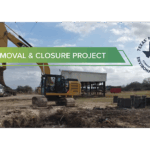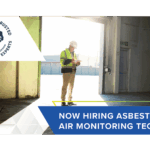
In the realm of real estate transactions, it is crucial to conduct due diligence to ensure that the property is environmentally viable and free from any potential hazards or contaminants. This is why Phase 1 Environmental Site Assessments (ESAs) play a vital role in determining the suitability of properties in Abilene and beyond. By undertaking these comprehensive evaluations, investors and property owners can make informed decisions regarding the acquisition, development, or leasing of real estate.
Understanding Phase 1 Environmental Site Assessments
Before delving into the intricacies of Phase 1 ESAs, it is important to grasp the underlying purpose behind these assessments and the key components that make them essential to the due diligence process.
Purpose of Phase 1 Environmental Site Assessments
The primary objective of a Phase 1 ESA is to identify any potential environmental liabilities associated with a property. It aims to assess the likelihood of contamination, evaluate compliance with applicable regulations, and provide an overall environmental risk profile. By conducting a Phase 1 ESA, stakeholders can make informed decisions about the future use of the property, mitigate potential risks, and even utilize the assessments as a liability protection tool.
Key Components of Phase 1 Environmental Site Assessments
A Phase 1 ESA involves a multidisciplinary approach, combining various components to form a comprehensive evaluation. These essential components include:
- Site Inspection: This initial step involves a visual assessment of the property and surrounding areas to identify potential environmental hazards or areas of concern.
- Historical Research: Extensive research is conducted to identify the property’s historical uses, potential contamination sources, and nearby sites that could impact its environmental condition.
- Regulatory Records Review: This involves the examination of local, state, and federal regulatory agency records to identify any previous environmental violations or incidents associated with the property.
By synthesizing these components, Phase 1 ESAs provide a comprehensive understanding of the environmental condition of a property, ensuring that stakeholders are equipped with valuable insights to make informed decisions.
The Process of Conducting Phase 1 Environmental Site Assessments in Abilene
When it comes to performing Phase 1 ESAs in Abilene, a systematic and well-defined process is followed to ensure accuracy and reliability in the assessment results. This process typically includes:
Initial Site Inspection
During the initial site inspection, environmental professionals evaluate the property, identifying any visible signs of contamination or potential pollution sources. This includes an assessment of both the property itself and nearby areas that could impact its environmental condition.
Historical Research
Conducting thorough historical research is vital to understanding a property’s environmental history and potential risks. Research includes reviewing historical property records, aerial photographs, topographic maps, and other valuable sources of information to unveil any red flags that may affect the site’s suitability for the intended use.
Regulatory Records Review
In this stage, environmental consultants delve into the vast amount of records available from local, state, and federal regulatory agencies. The goal is to unveil any past or present environmental violations, permits, or issues associated with the property or neighboring sites. This comprehensive review ensures that stakeholders are fully aware of any potential liabilities that may affect the property.
Interpreting the Results of Phase 1 Environmental Site Assessments
Once the Phase 1 ESA is complete, it is necessary to interpret the findings to make informed decisions about the property. Two key aspects require attention: Recognized Environmental Conditions (RECs) and Controlled Recognized Environmental Conditions (CRECs).
Recognizing Recognized Environmental Conditions (RECs)
RECs typically refer to the presence, likely presence, or potential for contamination on a property due to past or present activities. These conditions may require further investigation or remediation to ensure the property’s suitability for the intended use. It is crucial to assess the severity and potential impact of any RECs and determine the appropriate actions to take.
Dealing with Controlled Recognized Environmental Conditions (CRECs)
CRECs encompass RECs that have been addressed to meet regulatory standards or requirements. These conditions have undergone remediation or control measures to mitigate their impact on the environment. Proper management of CRECs is necessary to ensure ongoing compliance with environmental regulations and to minimize any future liability.
The Role of Phase 1 Environmental Site Assessments in Property Transactions
Phase 1 ESAs play a critical role in property transactions, providing valuable risk management and liability protection. Understanding the significance of these assessments is essential for stakeholders involved in real estate transactions.
Risk Management in Real Estate Transactions
By conducting a Phase 1 ESA, potential environmental risks associated with a property are identified and assessed. This enables stakeholders to evaluate the financial implications, potential liabilities, and possible impediments to the property’s future development. With a comprehensive understanding of the associated risks, investors can make informed decisions and take appropriate mitigating measures, thus minimizing financial and legal risks.
Legal Implications and Liability Protection
Phase 1 ESAs also serve as a crucial tool for liability protection. Compliance with the Comprehensive Environmental Response, Compensation, and Liability Act (CERCLA) and the All Appropriate Inquiry (AAI) rules can provide liability protection for prospective purchasers and innocent landowners. By fulfilling the requirements through a Phase 1 ESA, stakeholders can potentially avoid or limit liability for future contamination linked to pre-existing land uses.
Future Perspectives: Phase 2 Environmental Site Assessments
While Phase 1 ESAs are invaluable in assessing the environmental condition of a property, in some cases, they may not be sufficient to determine the full extent of potential contamination. This is where Phase 2 Environmental Site Assessments come into play.
When is a Phase 2 Environmental Site Assessment Necessary?
A Phase 2 ESA is typically warranted when a Phase 1 ESA raises concerns or identifies Recognized Environmental Conditions that require further investigation. Phase 2 assessments involve sampling and testing various environmental media, such as soil and groundwater, to quantify and delineate contamination. The results obtained from a Phase 2 ESA provide a more detailed understanding of the environmental risks associated with the property, enabling stakeholders to make informed decisions regarding potential remediation measures.
Differences between Phase 1 and Phase 2 Assessments
While Phase 1 ESAs focus on initial due diligence and identification of potential environmental risks, Phase 2 assessments take a more in-depth approach. Phase 2 ESAs involve onsite testing and analysis to confirm the presence and extent of contamination, often leading to informed remediation decisions and further risk management.
In conclusion, Phase 1 Environmental Site Assessments are an integral part of real estate transactions in Abilene and beyond. By understanding their purpose, key components, and interpretation of results, stakeholders can confidently navigate the due diligence process, manage environmental risks, and safeguard their investments. Moreover, the role of Phase 1 ESAs in risk management and liability protection further emphasizes their significance. Looking ahead, Phase 2 Environmental Site Assessments provide a deeper understanding of potential contamination, enabling stakeholders to implement appropriate measures and secure a sustainable future for the properties they acquire.
Ready to ensure your property in Abilene meets environmental compliance and is free from potential liabilities? ESE Partners is here to guide you through the complexities of environmental due diligence. Our team of expert environmental engineers and scientists specialize in Phase 1 and Phase 2 Environmental Site Assessments, offering innovative solutions tailored to your unique needs. With offices across Texas, including Dallas-Fort Worth, League City, Austin, and San Antonio, we’re well-positioned to assist you in responsibly moving your business forward. Don’t leave your environmental concerns to chance. Request A Proposal today and partner with ESE Partners for comprehensive, quality-driven environmental services that prioritize your business’s future and the community’s quality of life.








